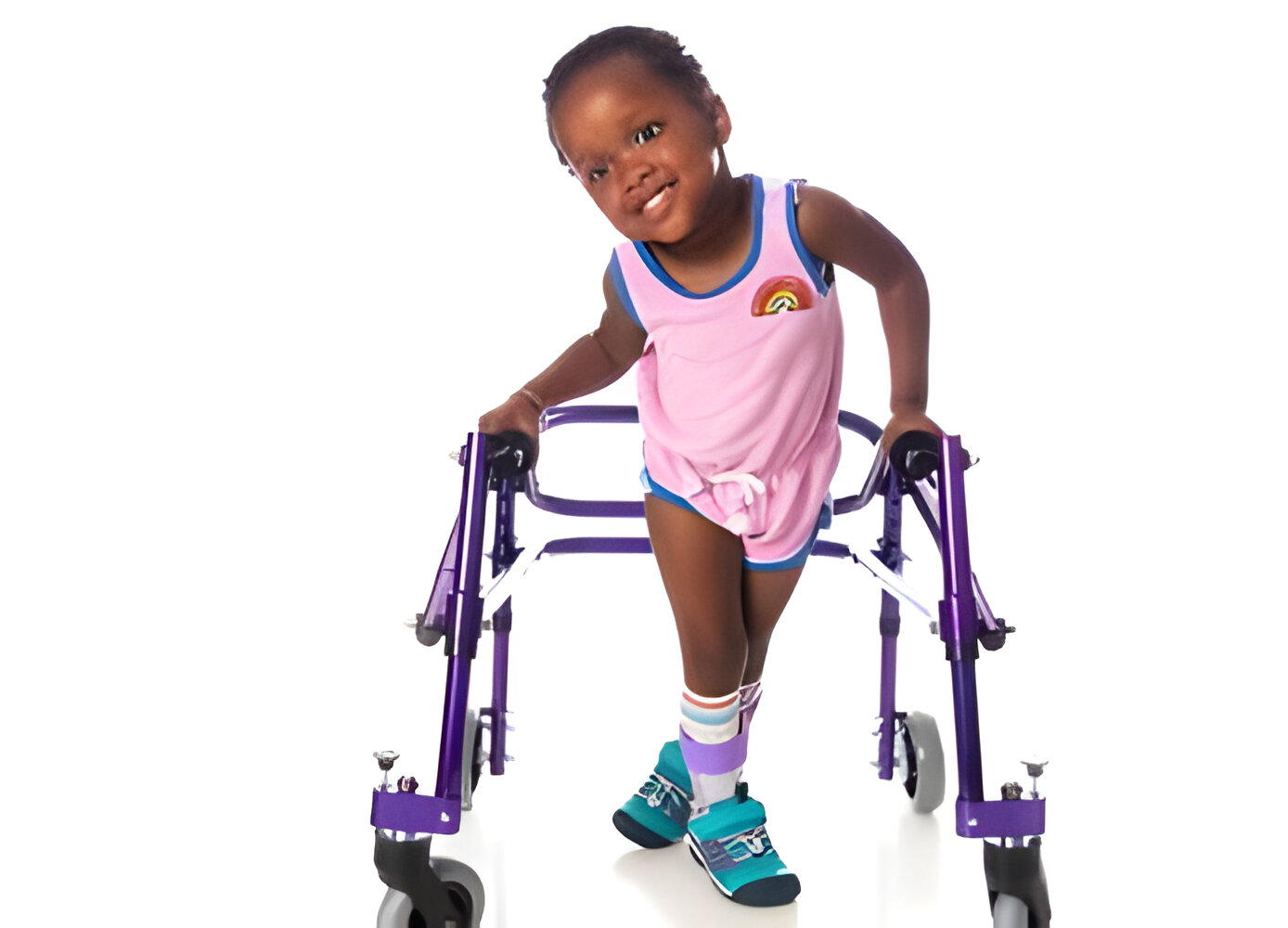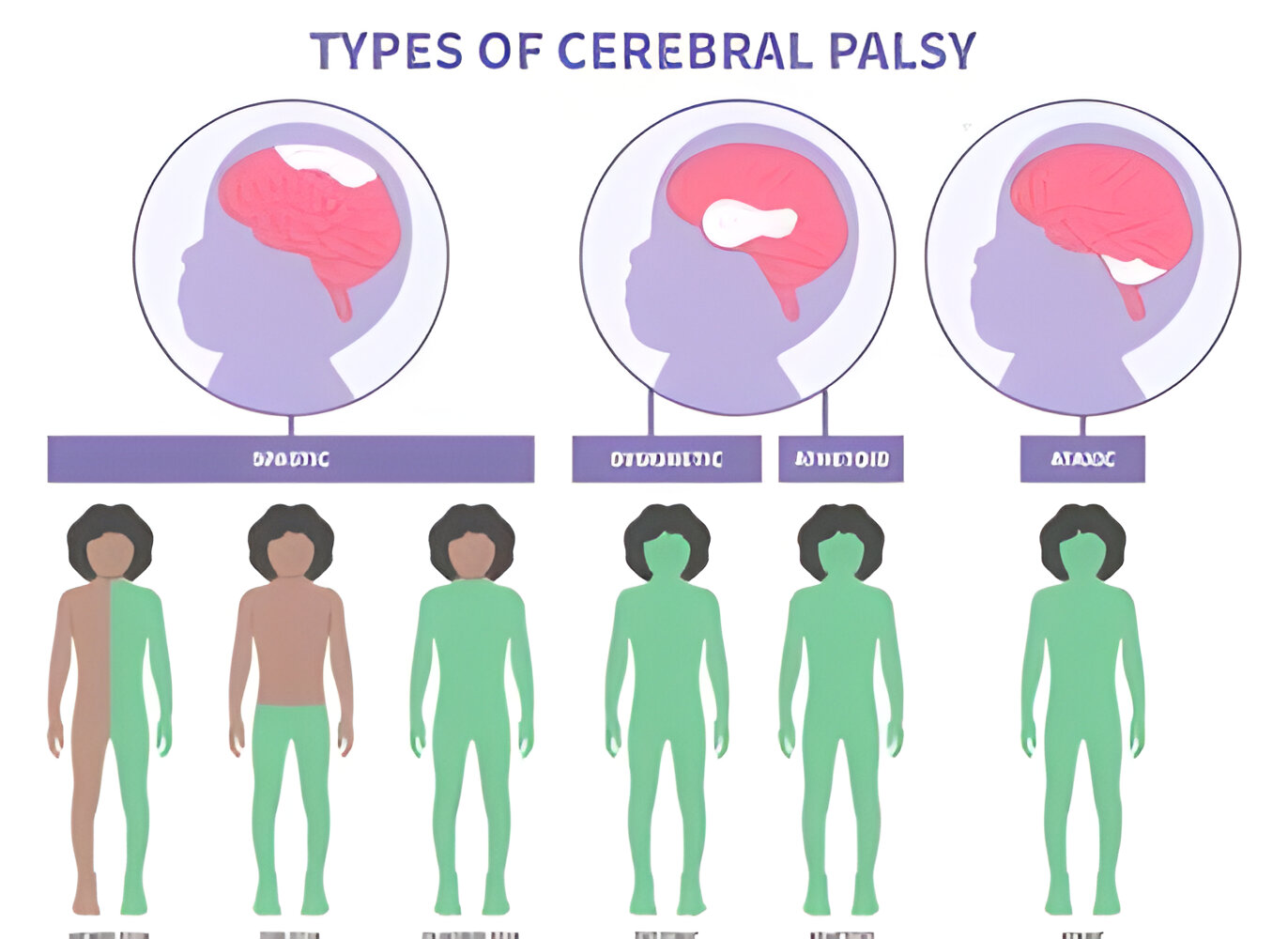Ataxic Cerebral Palsy is characterized by the inability to maintain normal balance and coordinate movement. It’s not quite common, as about 5% of the total number of cerebral palsy cases are estimated to be ataxic, which represents that it’s the least common kind of cerebral palsy.
People with ataxic CP experience problems while undertaking coordination-related tasks, which might be normal activities such as walking or handwriting. However, some procedures can be performed to improve these skills, which will help them lead a better lifestyle.
What is Ataxic Cerebral Palsy?
Ataxic Cerebral Palsy is a form of cerebral palsy that is like all other types of cerebral palsy: a developmental disorder that greatly affects movement ability. At the same time, the problems that go along with symptoms dealing with this particular form of cerebral palsy are problems with coordination and balance. The difficulties result from an impaired part of the developing brain that controls motor function.
Children with ataxic CP, upon being diagnosed, are normally found to have a hard time controlling their movements. Most of the time, this kind of child appeared unsteady and found it so much more difficult to do precise movements, such as holding small things, lifting weights on their feet or hands, or precise operations, such as writing. It can affect any part of their bodies, including their hands, arms, legs, feet, speech, or eyes.
Children with Ataxic Cerebral Palsy may have difficulties with balance and coordination that greatly interfere with their daily activities. They may be unable to walk, run comfortably, sit quietly, or move with maximum comfort.
Doing any physical exercises or sports for them becomes very problematic, and they are not involved in things that then become part of sedentary lifestyles to develop problems like obesity and tight muscles.

Ataxic Cerebral Palsy Causes
Ataxic cerebral palsy results from a brain injury that might occur at birth or later in life as a result of an accident. It is the least of all cerebral palsy. The children affected usually develop signs of unsteady movements and lack of coordination due to weak muscle tone.
This is a state in which injury occurs in the part of the brain referred to as the cerebellum, which is responsible for maintaining balance and controlling motor functions. Damage to the cerebellum may lead to a delayed or broken signaling process, causing physical difficulties.
This also causes problems with new motor skill learning because the cerebellum plays an important role in learning new motor skills; thus, it creates problems with the walking and other motor activities of children with ataxic cerebral palsy.
Some of the external conditions that may cause ataxic cerebral palsy are very high fever, injuries during pregnancy, including infectious diseases during pregnancy, and exposure to toxins or poisons. Infections such as meningitis and encephalitis may also result in ataxia.
Signs and Symptoms of Ataxic Cerebral Palsy
Ataxic cerebral palsy manifests itself in various forms. Some of the most frequent signs are:
- Difficulty in coordinating body movements
- Issues with maintaining balance
- An unstable walk characterized by a broad stride
- Distinctive speaking patterns are often referred to as “scanning speech.”
- Shaking or trembling
- Struggles with depth perception
- Challenges in swallowing
Ataxic cerebral palsy is usually manifested by unsteady gait and a lack of coordination of movements. These symptoms are usually regarded as representing other diseases or developmental disorders.
Healthcare providers will more often than not be reluctant to provide a child with an evaluation of ataxic cerebral palsy before the child attains at least two years of age. Other symptoms, particularly in the baby and toddler stages, include slow eye movement and difficulty swallowing. Cases of difficulty in swallowing can also lead to acid reflux.
Ataxic Cerebral Palsy vs Spastic Cerebral Palsy

Ataxic brain palsy is the most unusual to see, occurring in just 5-10 percent of diagnosed individuals with the condition. What is most damaged by this condition is balance and coordination. Ataxic palsy can develop as:
- A lack of stability
- Inaccurate movements
- Movements that are disorderly and uneven
There are about four types associated with cerebral palsy, with one especially common kind indicated on the records in about 80% of all cases diagnosed. Spastic cerebral palsy is a general term in which there is stiffness or spasticity of the muscles. Characteristics include:
- Increased muscle tension
- Muscle rigidity
- Movements that lack coordination
- The remaining main types of cerebral palsy are:
- Involuntary movements in the hands, arms, feet, and legs characterize dyskinetic cerebral palsy
- Mixed cerebral palsy is when a person exhibits symptoms of multiple types of cerebral palsy.
Diagnosis of Ataxic Cerebral Palsy
Ataxic cerebral palsy is identified most of the time before a child reaches two years of age. Of course, health experts will be doubtful of this when a child is just born early or they get other health concerns that seem connected to cerebral palsy.
No single test helps confirm a diagnosis of ataxic cerebral palsy. Health professionals look at several different things when determining if a child may have this kind of problem. This is done by monitoring the child’s:
- Overall Development
- Growth Progress
- Reflex Reactions
- Motion Patterns
- Muscle Firmness
Their investigation could involve several tests, such as:
- Imaging the brain with MRI, CT scans, or ultrasound
- Testing blood and urine to rule out other health or genetic conditions
- Conducting an electroencephalography (EEG) to study the brain’s electrical activity
- Carrying out electromyography (EMG) to look for any muscle weakness
- Examining the child’s way of walking and moving
- Conducting tests related to speech, hearing, and vision.
Treating Ataxic Cerebral Palsy
Although the damaged parts of the brain cannot recoup themselves, the unaffected parts have a capacity referred to as neuroplasticity that helps improve functions disturbed by ataxic CP. Neuroplasticity is the enhanced ability to change and restructure neural pathways due to learning from new experiences.
Our brain changes and can develop constantly, depending on the activity that it repeatedly performs. The functions interrupted by brain damage are more likely to be transferred to the non-injured areas at once, either from the left or right side of the brain, and improve accordingly, provided that normal practice is given to the abilities we want to enhance.
Here are some avenues for addressing ataxic cerebral palsy:
Physical Therapy
This will help improve your child’s balance and correct any unusual walking behaviors with prescribed exercises. Therapy also works on core strength and stability and may provide special equipment, such as crutches or a walker, for your child to move around properly. Therapists often include games and activities like an obstacle course to motivate a child to participate in physical therapy.
Occupational Therapy
It helps an individual develop his fine motor skills by exercising in activities like self-care or eating. In the case of children, therapists worked with the child to coordinate movements required for play and develop the skills needed for school work. They also instruct people on using adaptive equipment and compensatory techniques to help make life activities easier.
Orthotic Devices
These may include braces and splints that lend structural support, helping the muscle tone at a weak point to better control and position.
Speech Therapy
This therapy may be equally helpful for all individuals suffering from communication disorders, as it exercises their oral motor muscles and enhances their communication ability. Devices for alternate communication can also be provided to people in need. Another action a speech therapist performs is detecting oral motor difficulties associated with eating and swallowing.
Exactly what might be used to effect and manage the condition—right down to what specific kind of motor deficits each patient was experiencing—would be subtle to these specific means of treatment. Still, as a general rule, if such targeted means of treatment were in place, the better neuroplastic changes in the enhanced recovery process would respond well to continued rehabilitative exercises and activities at only a very few, instead of just one, locale.
Does Ataxic Cerebral Palsy Become Severe As Time Passes?
Unlike other forms, Ataxic Cerebral Palsy does not get worse with time. However, related problems or secondary conditions may worsen if not properly treated. Most of the children suffering from this form of cerebral palsy could live a relatively normal life close to their peers, provided appropriate medical attention and care are passed.
What Will Be the Life Expectancy Of Someone With Ataxic Cerebral Palsy?
Ataxic Cerebral Palsy: The life span with ataxic cerebral palsy is usually longer than that of the other types, as it is with less severity. Most children born with ataxic cerebral palsy don’t have very severe cases.
Younger is generally better; the earlier a child starts real help, the better he is likely to do. The disability does not damage the mind more over time, but there is a window in which treatments have maximal effects.
Bottomline
An ataxic cerebral palsy diagnosed in a child would indicate that earlier help and care must be given to the child. Without such, there is a chance that the child would catch up one step backward in their emotional and physical development. You should have your baby checked now and then by the physician from the time he was born until his third birthday.
Suppose medical errors are suspected as the birth injury that gave rise to ataxic cerebral palsy in your child. In that case, you want to engage a specialized legal firm for birth injury services. Perhaps they would assist in those follow-up investigations in your case, help you achieve justice, and maybe assist you in getting some sort of compensation for medical malpractice.

